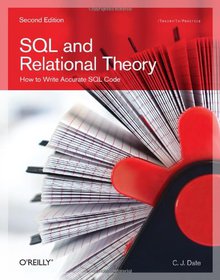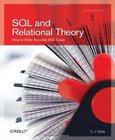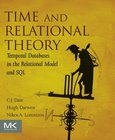SQL and Relational Theory
How to Write Accurate SQL Code
2nd Edition

Book Details:
| Publisher: | O'Reilly Media |
| Series: | OReilly , How To |
| Author: | C. J. Date |
| Edition: | 2 |
| ISBN-10: | 1449316409 |
| ISBN-13: | 9781449316402 |
| Pages: | 448 |
| Published: | Dec 28 2011 |
| Posted: | Nov 19 2014 |
| Language: | English |
| Book format: | |
| Book size: | 20.26 MB |
Book Description:
SQL is full of difficulties and traps for the unwary. You can avoid them if you understand relational theory, but only if you know how to put the theory into practice. In this insightful book, author C.J. Date explains relational theory in depth, and demonstrates through numerous examples and exercises how you can apply it directly to your use of SQL. This second edition includes new material on recursive queries, 'missing information without nulls, new update operators, and topics such as aggregate operators, grouping and ungrouping, and view updating. If you have a modest-to-advanced background in SQL, you'll learn how to deal with a host of common SQL dilemmas. Why is proper column naming so important? Nulls in your database are causing you to get wrong answers. Why? What can you do about it? Is it possible to write an SQL query to find employees who have never been in the same department for more than six months at a time? SQL supports 'quantified comparisons, but they're better avoided. Why? How do you avoid them? Constraints are crucially important, but most SQL products don't support them properly. What can you do to resolve this situation? Database theory and practice have evolved since the relational model was developed more than 40 years ago. SQL and Relational Theory draws on decades of research to present the most up-to-date treatment of SQL available. C.J. Date has a stature that is unique within the database industry. A prolific writer well known for the bestselling textbook An Introduction to Database Systems (Addison-Wesley), he has an exceptionally clear style when writing about complex principles and theory.
Download Link:
Related Books:
SQL and Relational Theory
How to Write Accurate SQL Code
Understanding SQL's underlying theory is the best way to guarantee that your SQL code is correct and your database schema is robust and maintainable. On the other hand, if you're not well versed in the theory, you can fall into several traps. In SQL and Relational Theory, author C.J. Date demonstrates how you can apply relational theory directly to your use of SQL. With numerous examples and clear explanations of the reasoning behind them, you'll learn how to deal with common SQL dilemmas, such as:Should database access granted be through views instead of base tables? Nulls in your database are causing you to get wrong answers. Why? What can you do about it? Could you write an SQL query to find employees who have never been in the same department for...
Time and Relational Theory
Temporal Databases in the Relational Model and SQL
Time and Relational Theory provides an in-depth description of temporal database systems, which provide special facilities for storing, querying, and updating historical and future data. Traditionally, database management systems provide little or no special support for temporal data at all. This situation is changing because: * Cheap storage enables retention of large volumes of historical data in data warehouses* Users are now faced with temporal data problems, and need solutions * Temporal features have recently been incorporated into the SQL standard, and vendors have begun to add temporal support to their DBMS products Based on the groundbreaking text Temporal Data & the Relational Model (Morgan Kaufmann, 2002) and new research led by the au...
Database Design and Relational Theory
Normal Forms and All That Jazz
What makes this book different from others on database design? Many resources on design practice do little to explain the underlying theory, and books on design theory are aimed primarily at theoreticians. In this book, renowned expert Chris Date bridges the gap by introducing design theory in ways practitioners can understandamp;#8212;drawing on lessons learned over four decades of experience to demonstrate why proper database design is so critical in the first place. Every chapter includes a set of exercises that show how to apply the theoretical ideas in practice, provide additional information, or ask you to prove some simple theoretical result. If youamp;#8217;re a database professional familiar with the relational model, and have more than a pa...
2007 - 2021 © eBooks-IT.org



